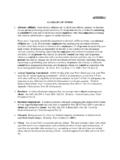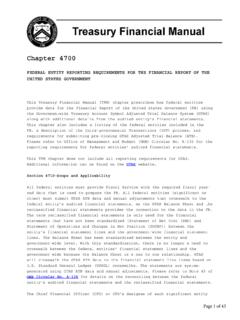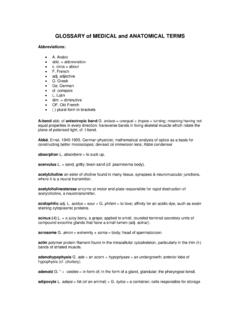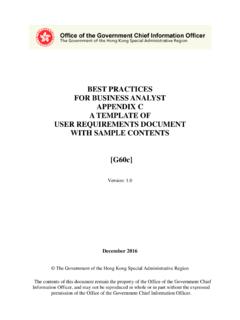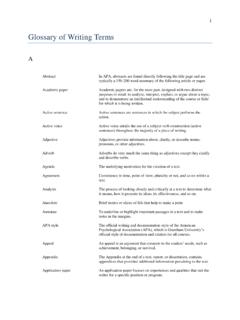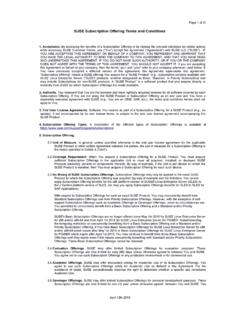Transcription of APPENDIX G HYDRAULIC GRADE LINE 1.0 Introduction 2
1 Storm Drainage 13-G-1 APPENDIX G HYDRAULIC GRADE LINE Introduction The HYDRAULIC GRADE line is used to aid the designer in determining the acceptability of a proposed or evaluation of an existing storm drainage system by establishing the elevation to which water will rise when the system is operating under design conditions. Detail on this system performance analysis is presented in this APPENDIX . Definitions Definitions of terms which will be important in a storm drainage analysis and design are provided in this section. These and other terms defined in the manual glossary will be used throughout the remainder of this APPENDIX in dealing with different aspects of storm drainage analysis.
2 Energy GRADE line Represents the total available energy in the system (potential energy plus kinetic energy). HYDRAULIC GRADE line - The HYDRAULIC GRADE line (HGL), a measure of flow energy, is a line coinciding with the level of flowing water at any point along an open channel. In closed conduits flowing under pressure, the HYDRAULIC GRADE line is the level to which water would rise in a vertical tube (open to atmospheric pressure) at any point along the pipe. HGL is determined by subtracting the velocity head (V2/2g) from the energy gradient (or energy GRADE line). Figure 1 illustrates the energy and HYDRAULIC GRADE lines for open channel and pressure flow in pipes. As illustrated in Figure 1, if the HGL is above the inside top (crown) of the pipe, pressure flow conditions exist.
3 Conversely, if the HGL is below the crown of the pipe, open channel flow conditions exist. Critical depth is defined as the depth for which the specific energy (sum of the flow depth and velocity head) of a given discharge is at a minimum. A slight change in specific energy can result in a significant rise or fall in the water depth when flow is at or near critical depth. Because of this, critical depth is an unstable condition and it rarely occurs for any distance along a water surface profile. April 2014 ODOT Hydraulics Manual 13-G-2 Storm Drainage Figure 1 - HYDRAULIC and Energy GRADE Lines in Pipe Flow Design Guidelines Storm drainage systems operating under surcharge conditions (pressure flow) shall evaluate the HYDRAULIC GRADE line and minor losses such as manhole losses, bends in pipes, expansion and contraction losses, etc.
4 Adjust inlet sizes/locations and pipe sizes/location to correct HYDRAULIC GRADE line problems. Pressure flow design must assure the HYDRAULIC GRADE line is feet or more below rim elevation of any drainage structure which may be affected. The energy GRADE line must also be at or below the rim elevation of any drainage structure which may be affected. ODOT Hydraulics Manual April 2014 Storm Drainage 13-G-3 Tailwater Evaluation of the HYDRAULIC GRADE line for a storm drainage system begins at the system outfall with the tailwater elevation. For most design applications, the tailwater will either be above the crown of the outlet or can be considered to be between the crown and critical depth of the outlet.
5 The tailwater may also occur between the critical depth and the invert of the outlet, however, the starting point for the HYDRAULIC GRADE line determination should be either the design tailwater elevation or (dc + D)/2, whichever is highest, where dc is outlet critical depth and D is crown depth. An exception to the above rule would be for a very large outfall with low tailwater where a water surface profile calculation would be appropriate to determine the location where the water surface will intersect the top of the barrel and full flow calculations can begin. In this case, the downstream water surface elevation would be based on critical depth or the design tailwater elevation, whichever was highest.
6 If the outfall channel is a river or stream, it may be necessary to consider the joint or coincidental probability of two hydrologic events occurring at the same time to adequately determine the elevation of the tailwater in the receiving stream. The relative independence of the discharge from the storm drainage system can be qualitatively evaluated by a comparison of the drainage area of the receiving stream to the area of the storm drainage system. For example, if the storm drainage system has a drainage area much smaller than that of the receiving stream, the peak discharge from the storm drainage system may be out of phase with the peak discharge from the receiving watershed. Table A provides a comparison of discharge frequencies for coincidental occurrence for a 10-year and 100-year design storm.
7 This table can be used to establish an appropriate design tailwater elevation for a storm drainage system based on the expected coincident storm frequency on the outfall channel. For example, if the receiving stream has a drainage area of 200 acres and the storm drainage system has a drainage area of 2 acres, the ratio of receiving area to storm drainage area is 200 to 2 which equals 100 to 1. From Table A and considering a 10-year design storm occurring over both areas, the flow rate in the main stream will be equal to that of a five-year storm when the drainage system flow rate reaches its 10-year peak flow at the outfall. Conversely, when the flow rate in the main channel reaches its 10-year peak flow rate, the flow rate from the storm drainage system will have fallen to the 5-year peak flow rate discharge.
8 This is because the drainage areas are different sizes, and the time to peak for each drainage area is different. April 2014 ODOT Hydraulics Manual 13-G-4 Storm Drainage Table A - Frequencies for Coincidental Occurrence AREA RATIO FREQUENCIES FOR COINCIDENTAL OCCURRENCE 10-Year Design 100-Year Design Main Stream Tributary Main Stream Tributary 10,000 to 1 1 10 2 100 10 1 100 2 1,000 to 1 2 10 10 100 10 2 100 10 100 to 1 5 10 25 100 10 5 100 25 10 to 1 10 10 50 100 10 10 100 50 1 to 1 10 10 100 100 10 10 100 100 Energy Losses All energy losses in pipe runs and junctions must be estimated prior to computing the HYDRAULIC GRADE line. In addition to the principal energy involved in overcoming the friction in each conduit run, energy (or head) is required to overcome changes in momentum or turbulence at outlets, inlets, bends, transitions, junctions, and access structure.
9 The following sections present relationships for estimating typical energy losses in storm drainage systems. The application of these relationships is included in the design example. Pipe Friction Losses The friction slope is the energy gradient in feet per feet for that run. Hf = Sf L (Equation 1) Where: Hf = total headloss due to friction in feet Sf = friction slope in feet per feet L = length of pipe in feet ODOT Hydraulics Manual April 2014 Storm Drainage 13-G-5 The friction slope in Equation 1 is also the HYDRAULIC gradient for a particular pipe run. The friction loss is simply the energy gradient multiplied by the length of the run in feet as indicated by Equation 1. The friction slope will match the pipe slope since this design procedure assumes steady uniform flow in open channels.
10 Pipe friction losses for pipes flowing full can be determined by Equation 2. Sf = = (Equation 2) Where: Sf = friction slope in feet per feet n = Manning s roughness coefficient D = pipe diameter in feet Q = design discharge in cubic feet per second Equation 3 and Equation 4 present forms of the Manning s equation rearranged to solve for energy loss. Hf = (Equation 3) Hf = (Equation 4) Where: Hf = total head loss due to friction in feet n = Manning's roughness coefficient D = diameter of pipe in feet L = length of pipe in feet V = mean velocity in cubic feet per second R = HYDRAULIC radius in feet g = gravitational constant ( feet per second squared) Exit Loss The exit loss is a function of the change in velocity at the outlet of the pipe.










